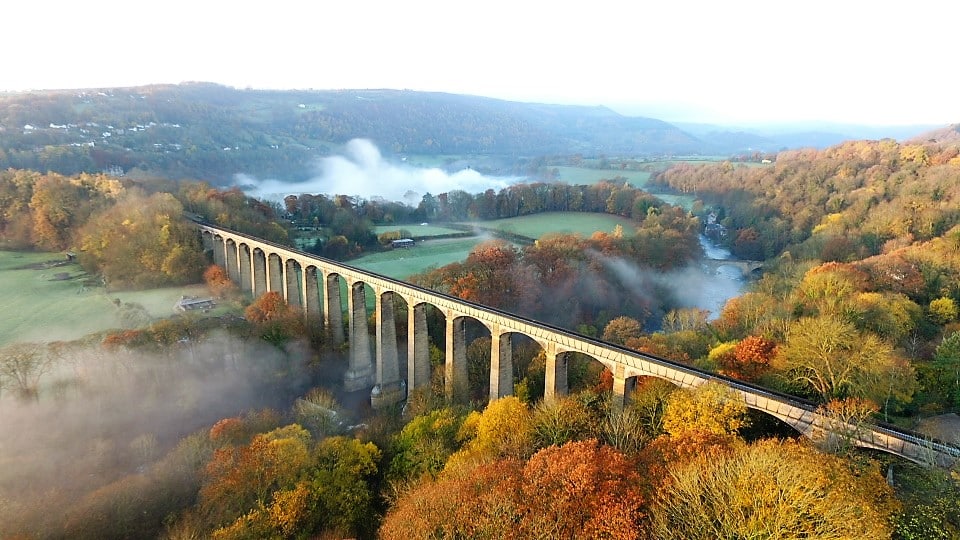Pontcysyllte Aqueduct

The Pontcysyllte Aqueduct carries the Llangollen Canal across the Dee Valley in North Wales
Nicknamed ‘the stream in the sky’, Pontcysyllte Aqueduct was built in 1805 by pioneering canal engineer Thomas Telford, and was granted World Heritage Status in 2009.
Pronounced ‘Pont-ker-sulth-tay’, the Welsh for ‘the bridge that connects’, it’s considered to be one of the Seven Wonders of the Waterways. And travelling across the Pontcysyllte Aqueduct is a ‘bucket list’ experience for canal boat holiday-makers.
Our canal boat hire base at Trevor is right next to the Aqueduct. And you can cruise to it in around 10 hours from our base at Whixall Marina.
We also offer boat trips across the Pontcysyllte Aqueduct.
Standing 38 metres high and 307 metres in length, it’s the longest and highest aqueduct in Britain.
Pontcysyllte Aqueduct carries 1.5 million litres of water, enough to fill 16,666 baths.
It’s formed of a cast iron trough, supported by iron arched ribs and carried on 18 stone pillars. It has over 11,000 bolts and iron used to make the trough was cast locally at Plaskynaston Foundary
The stone piers holding up the iron trough are hollow at the top to reduce their weight. As well as lime and water, the mortar used in the building of the aqueduct contained ox blood, believed to give it strength.
Designed by Thomas Telford, it was built using wooden scaffolding and simple cranes. It took over 500 men and 10 years to build the aqueduct and 8,000 people came to the opening ceremony of the aqueduct in 1805.
It’s a Grade I Listed structure and a Scheduled Ancient Monument and is cared for by national waterways charity the Canal & River Trust.
The Pontcysyllte Aqueduct & Canal World Heritage Site stretches for 11 miles from Gledrid in England to Llangollen in Wales.
UNESCO describes the site as ‘a masterpiece of creative genius’ and ‘an outstanding piece of industrial and engineering heritage comprising of embankments, tunnels, viaducts and aqueducts.’
The whole length of the site has also been designated a Scheduled Ancient Monument of National Importance and an Area of Outstanding Natural Beauty.

